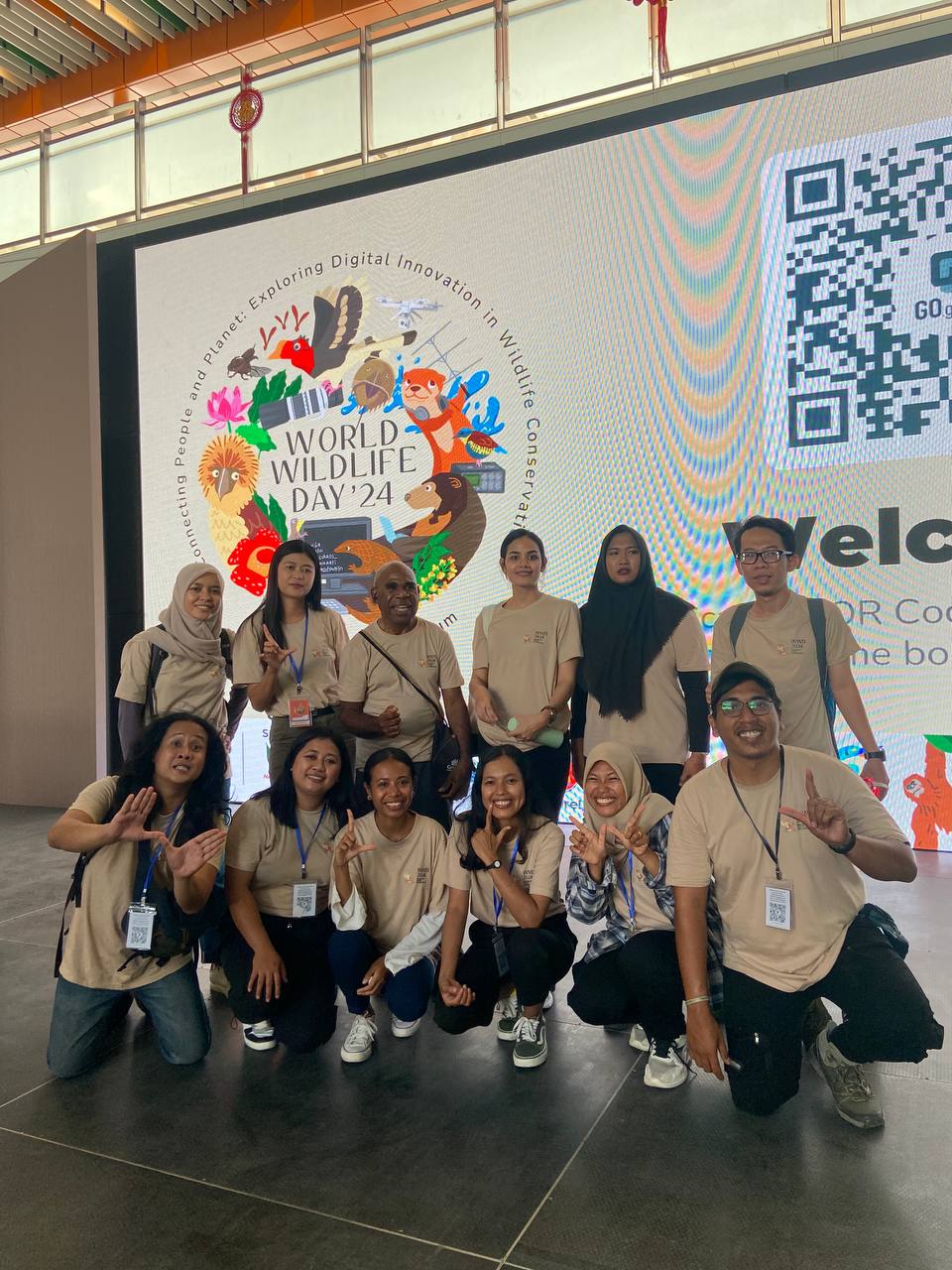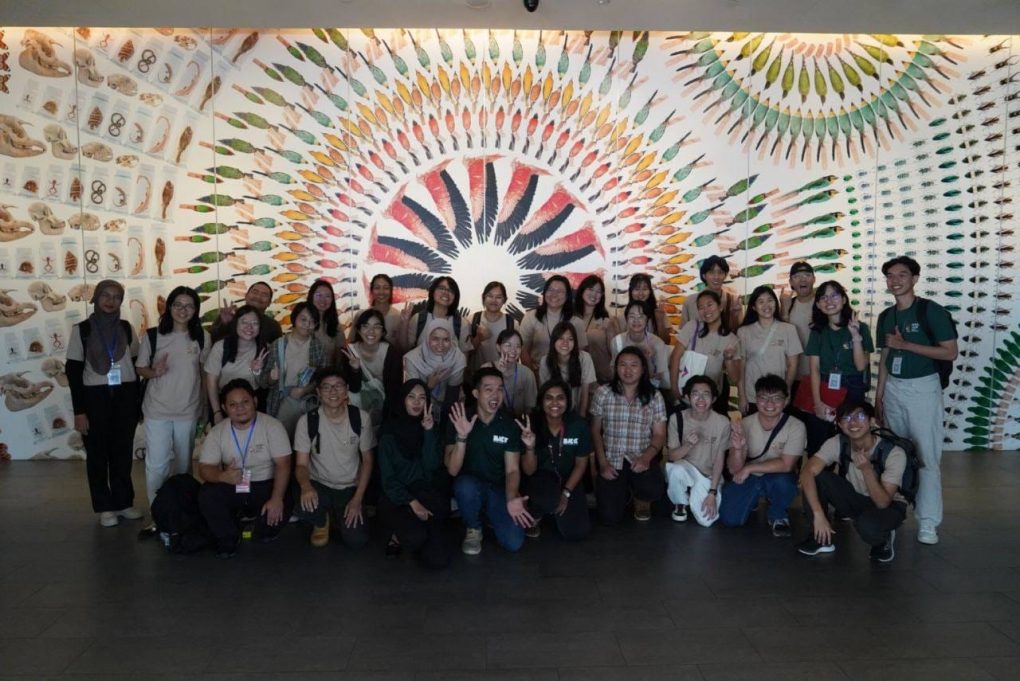World Wildlife Day Regional Youth Symposium 24-25 February 2024, Singapore
by Kurnia Ahmaddin and Nur Aoliya
World Wildlife Day (WWD) is a day to celebrate the diversity of wildlife throughout the world and commemorates the first signing of the Convention on International Trade in Endangered Species of Wild Fauna and Flora (CITES) on March 3, 1973. In the framework of this global celebration, the National Parks Board ( NParks) Singapore initiated the World Wildlife Day Regional Symposium event which highlights the wildlife of Southeast Asia. This event was organized by young people (under the age of 35 years) who are members of NParks’ Youth Stewards for Nature program. This annual agenda, which started in 2022, and this year event was held on 24-25 February 2024 in Singapore. The event was attended by more than 300 participants, consisting of young people from the Southeast Asia region who were interested or currently studying and even involved in nature and wildlife conservation. Participants are also representatives from regional ASEAN member countries who were invited by the organizers. More than 10 conservation institutions from Indonesia were invited to take part in this symposium, including us two delegates representing Swaraowa.
The global theme of WWD 2024 is “Connecting People and Planet: Exploring Digital Innovation in Wildlife Conservation”. In accordance with this theme, this event has five main objectives, namely: 1) Building a conservation network for the younger generation in Southeast Asia. 2) Connecting young people with mentors in the field of wildlife conservation. 3) Increase international awareness of innovative conservation practices in Southeast Asia. 4) Highlight new digital solutions for monitoring and protecting wildlife. 5) Encourage environmental management and nature protection for the future. The event consists of seminars from experts working in the field of nature and wildlife conservation, focus group discussions, workshops and youth show cases.
The event on the first day began with an opening speech by the Ministry for National Development Singapore, Mr. Desmond Lee. The second speech was delivered by Dr. Sonja Luz who is the CEO of Mandai Nature and closed with a message delivered by Ms. Ivonne Higuero as Secretary General of CITES through a video specially made to open this event. The event continued with the first seminar session on biodiversity conservation assisted by technology. The first speaker was Mr Nguyen Van Thai from Vietnam who delivered a presentation on the use of camera traps, drones, SMART patrols and GPS trackers for wildlife monitoring patrols and poaching in Vietnam. The outline of the presentation is the use of camera traps equipped with signal amplifiers to monitor hunting in ‘real time’. He further talked about using a GPS tracker to find whereabouts of pangolins, the tracker antenna was attached to the drone so that the search range was wider and faster than manual tracking relying only on humans.
The next speaker is Mr. Malcom Soh from the National Park Board Singapore presented on collecting data on wild animals and plants using camera traps and passive recording devices as well as efforts to prevent conflicts between humans and wild animals. The third speaker was Anton L. Delgado from the Pulitzer Center Cambodia. The big point in his presentation was the importance of using social media by young people in reporting or reporting on wildlife trade crimes in Cambodia. After lunch Ms Trang Nguyen from WildAct Vietnam and Ms. Reaksmey Luy from CEPA Cambodia talked about the importance of education and the role of women in protecting wildlife in their country. In closing the seminar session, Mr Alex Waisimon from Isyo Hill’s Eco-Tourism Papua Indonesia told us participants to balance the relationship between humans and wildlife. He talked about the process of changing bird hunters to become active bird watching tour guides in Papua.
Closing the first day of the event, all participants took part in a focus group discussion facilitated by youth biodiversity leaders from throughout ASEAN. The participants were divided into small groups of 10-12 people/groups and given certain scenarios where each person in the group had their respective roles as stakeholders. From this activity participants learned about the challenges and opportunities in involving stakeholders for biodiversity conservation.
On the second day, participants were free to choose which workshops were held, of which 10 workshops were available from institutions in Sigapura. Some of the workshops include a visit to Mandai Nature to see ex-situ bird conservation and find out how technology is used in the Singapore Zoo. Participants who are interested in coral reef conservation can also visit the workshop at the St John’s Island National Marine Laboratory (SJINML). Participants who are more interested in campaign activities can take part in workshops at the ArtScience Museum, WWF-Singapore Workshop, Global Youth Biodiversity Network Southeast Asia, and Nature Storytelling Workshop. We chose to take part in the Ethnobotany Workshop: Connecting People, Plants and Culture at the Singapore Botanic Gardens and the LKCNHM Workshop: Revealing Conservation Narratives through Taxonomy at the Lee Kong Chian Natural History Museum (LKCNHM).
The final event closed with a youth show case which was a presentation of conservation projects initiated by youth in the ASEAN region. The project appearance was in the form of a poster presentation and Indonesia presented two projects, namely from Nusa Biodiversitas Indonesia and PROGRES Sulawesi which presented community assistance activities in Lombok and Sulawesi. We also watched poster presenters from other countries such as Cambodia, Thailand, Vietnam, the Philippines, Malaysia and Singapore. The event closed with a group photo of all participants who took part in the series of events.
We feel very fortunate to be part of this youth Symposium. This is because we gain new knowledge conveyed by seminar presenters and workshop facilitators, we can also increase our network of friends in Southeast Asia. The large number of young participants who attended was a glimmer of hope regarding regeneration and building a network for biodiversity conservation in Southeast Asia.



